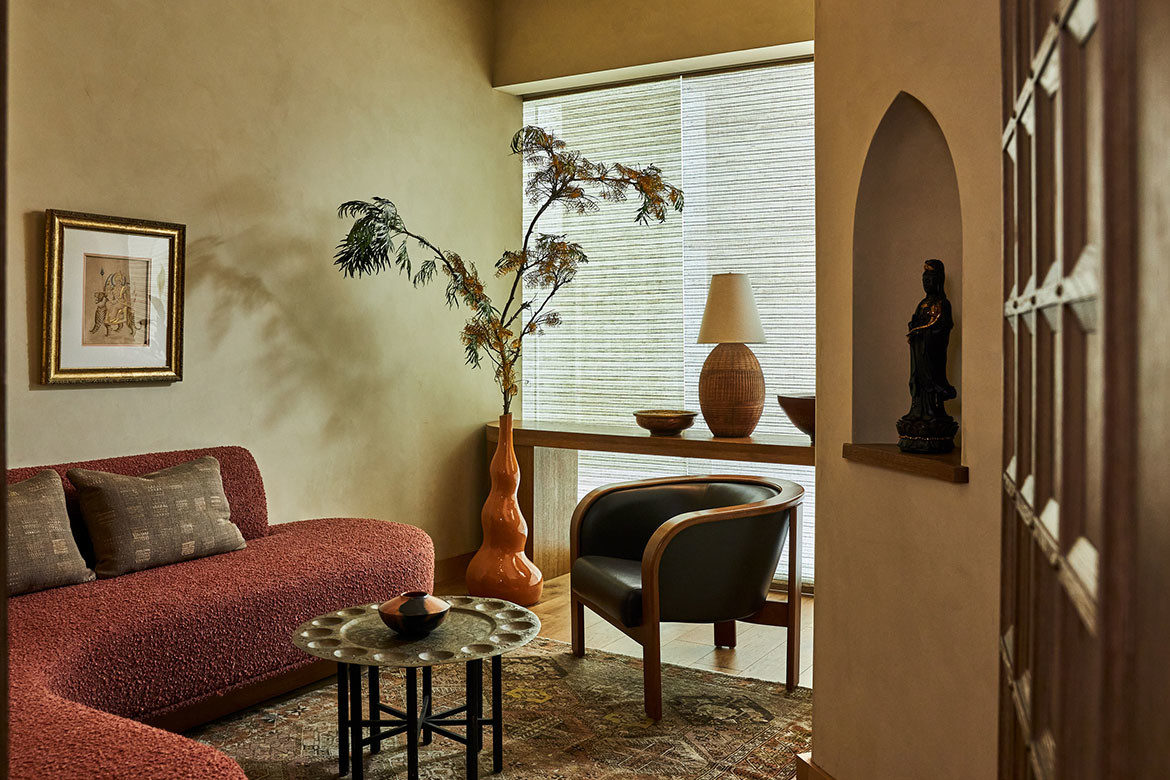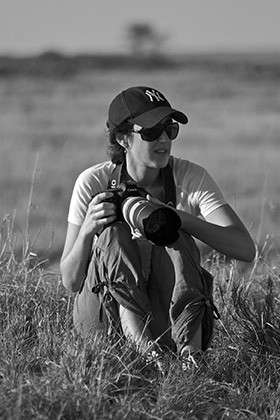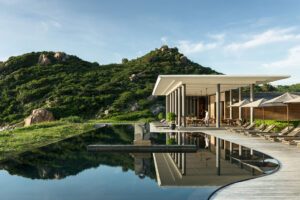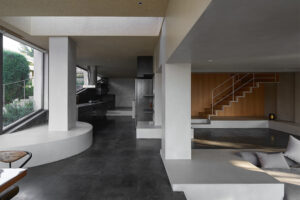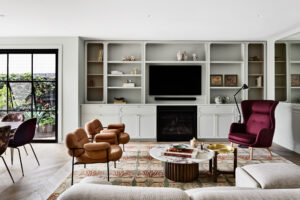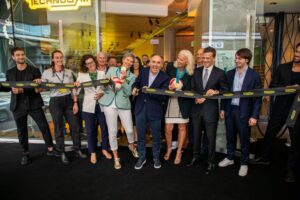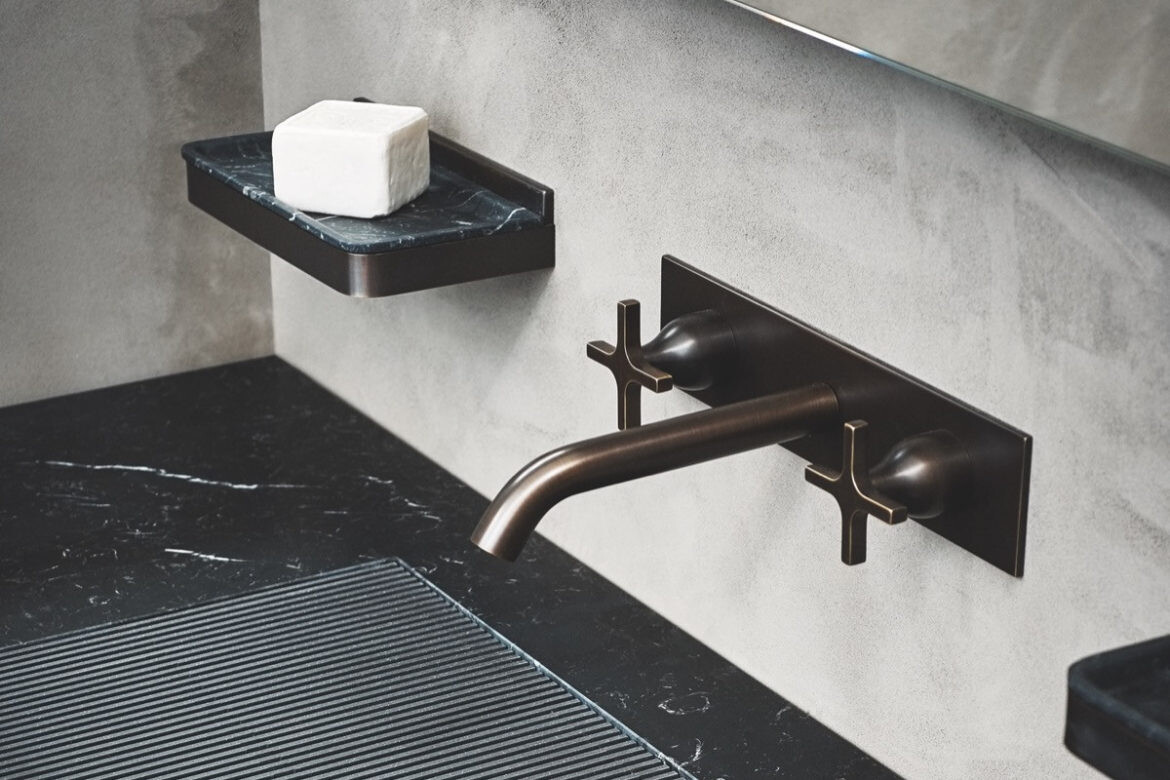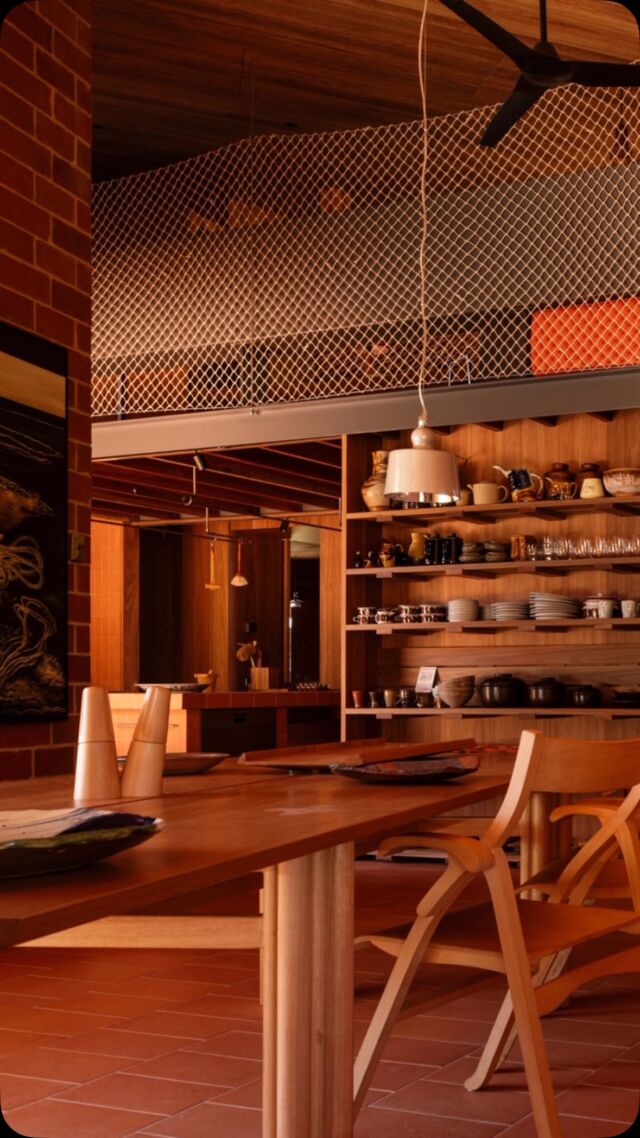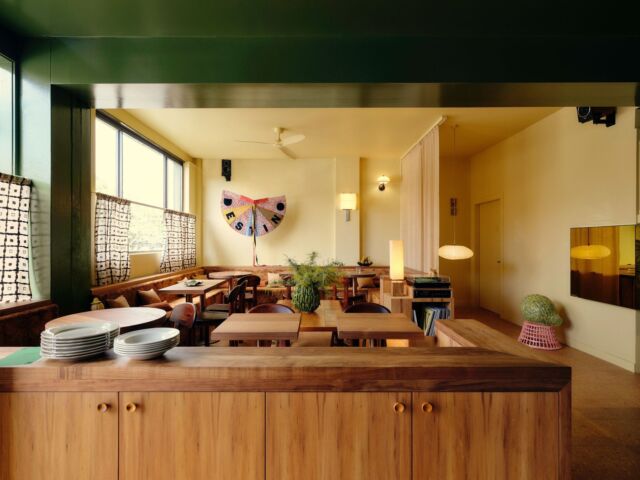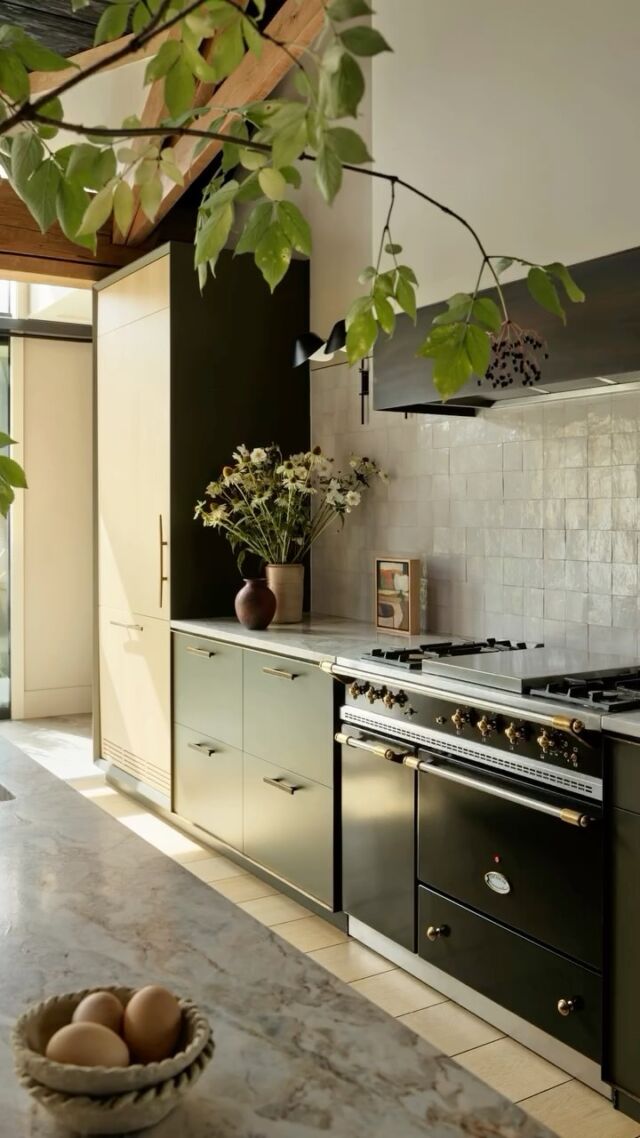Wellbeing design is certainly not new. A practice dating back millennia, the modern day trend towards creating spaces that engender productivity and improved health has evolved at a rapid pace in the past two decades. In that time, its very definition has extended beyond the idea of personal goal setting (think gyms and spas) and pragmatic needs (think hospitals and clinics), to the realm of journey and experience.
“Wellness culture and its influence on architecture is something that has been on the rise long before the events of the last two years, but our recent circumstances have put even greater urgency on designing for wellbeing,” offers Matt Ducharme, Woods Bagot’s principal and west coast design leader.
In talking further with Ducharme and his team, it has become clear that design studios are becoming increasingly preoccupied with understanding how the very best aspects of these approaches can play out in the full spectrum of design categories.
1. Surya Spa by Kelly Wearstler






In Kelly Wearstler’s design for the 3000-square-foot Surya Spa in the Santa Monica Proper Hotel (USA), guests are encouraged to explore 10,000 years of Indian wellness principles through steam and oil treatments, Panchakarma practice, TM classes and the consumption of wildcrafted, plant-based foods amongst other spa modalities.
Wearstler has emphasised the Ayurvedic influence by colouring each treatment room in theme with one of the Ayurvedic doshas (Vata, Pitta, or Kapha) and by fusing elements of traditional Indian architecture with the building’s historic details.
2. The Continental Hotel Sorrento by Woods Bagot
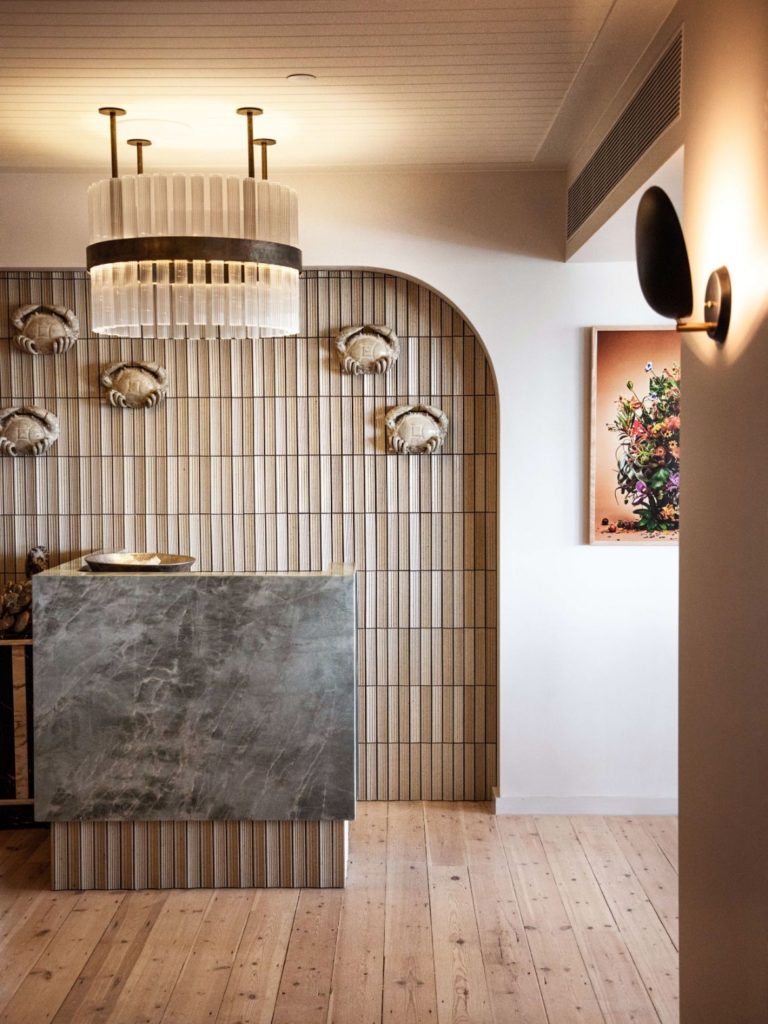



“The value of feeling safe and well has never been higher, and designers have been galvanised by the call to create comforting spaces that ensure peace of mind as well as body,” says Bronwyn McColl, Woods Bagot’s Melbourne-based hotel sector leader. “As travel restrictions lift in varying stages across the globe, the future of the hotel is at the forefront of our minds. Hotels need to be spaces people can trust completely with their health.”
In Woods Bagot’s refurbishment of Sorrento’s Continental Hotel (Victoria), for example, inspiration has been drawn from the calm, restorative nature of subterranean hydro-pools, ancient bathing traditions, and hot and cold contrast therapy. More on this project here.
3. Holism by Studio Tate
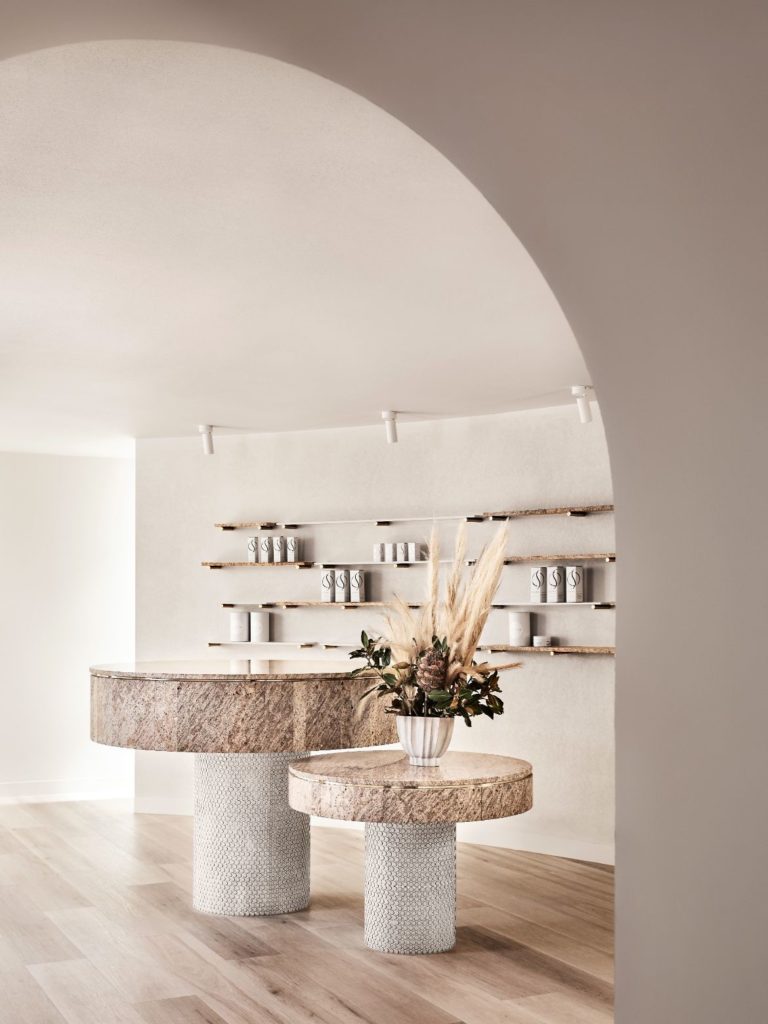





“Day spa operators strive to create transformative experiences for their clients, and intelligent design is integral to that,” adds Emily Addison, senior associate at Studio Tate. The studio is notable for its hotel and wellbeing design in Australia.
“At Holism, a wellness centre in Melbourne, we created a layered canvas of muted, desert hues as a soothing base. The palette was subtly enlivened by arched thresholds and mirrors, sculptured pink granite, curved walls, and soft, recessed lighting. Each element contributing to a sense of calm, whilst still maintaining an undercurrent of quiet dynamism for the guest experience.”
4. Aman Ayurshala Centre
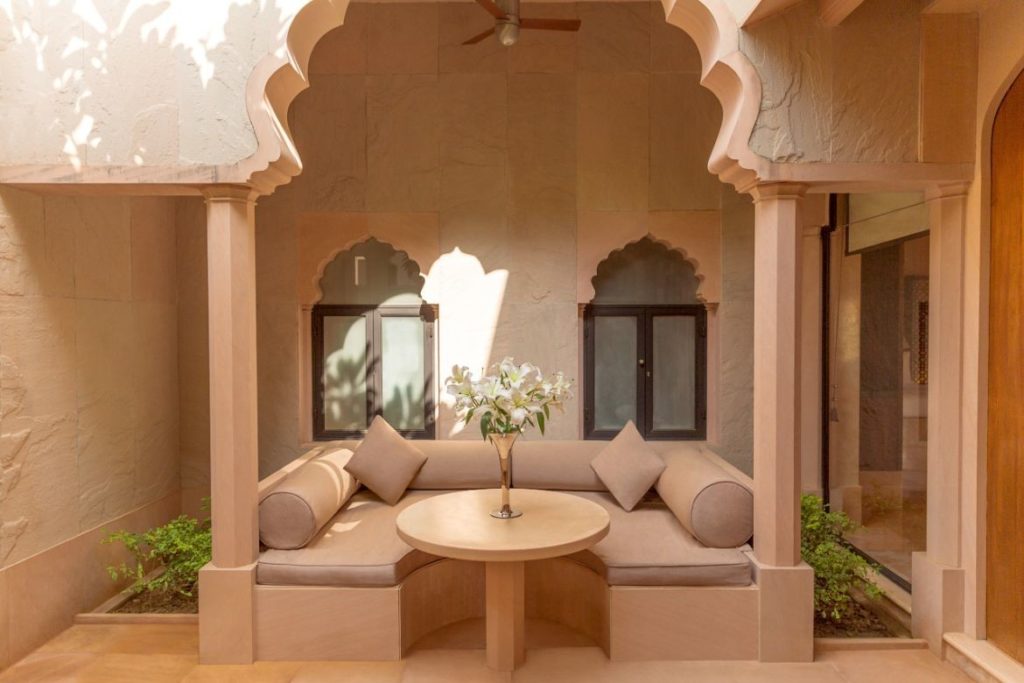

In pushing Ayurvedic principles to the max, at Amanbagh (India), the Aman brand has welcomed a first-of-its-kind Ayurshala Centre. This apothecary of Ayurveda sits next to the resort’s Ayurvedic medicinal garden, where a team of specialist therapists and an in-house Ayurvedic doctor prescribe and prepare medicines and oils specifically made for guests.
“Designed as a place to gain a unique insight into Ayurveda Apothecary, the new stand-alone centre will also host a four-night or more Ayurshala Traditional Medicine Immune Support Retreat which will take guests on an educative and transformative journey through Ayurveda,” explains Yuki Kiyono, Aman’s head of wellness and spa.
“Aman believes that reconnecting with the environment and purity offers a means to rediscover the universe inside.” More Aman projects here.
5. 1R by Foolscap Studio






At 1R, South Yarra (Melbourne), the gym’s first Australian export, Foolscap Studio has focused on its client’s desire to foster community spirit. “1R is an experience-focused gym, offering an ongoing relationship and results through an open attitude of contract-free memberships,” explains studio founder Adèle Winteridge.
“They understand that physical health and mental wellbeing are ongoing journeys and this dichotomy played out in our conceptual response. ‘Dystopia’ and ‘Utopia’ are referenced in our ‘World Above’ and ‘World Below’ concepts, themselves informed by the dual levels of the site.
The wellness journey became an idea we deployed through spatial planning and wayfinding, while bold, ‘self-confident’ exercise spaces feature dramatic, energy-efficient lighting and state-of-the-art AV experiences.”
At the gym’s entry level, the reception and juice bar have been constructed from illuminated glass bricks whilst a mirrored wall puts the suspended lighting grid on repeat, creating an infinite horizon and an atmosphere of textural light. “Envisaged as immersive chambers of energy, the exercise studios sit downstairs behind closed doors, insulated from the outside world,” says Winteridge.
“In contrast, along the corridor, the change rooms present utilitarian finishes of natural stainless steel, metal mesh and chequer plate aluminium: a clean, transformational environment—featuring a classical soundtrack from which to resurface.”
Bonus – Biophilic spaces with Stylus
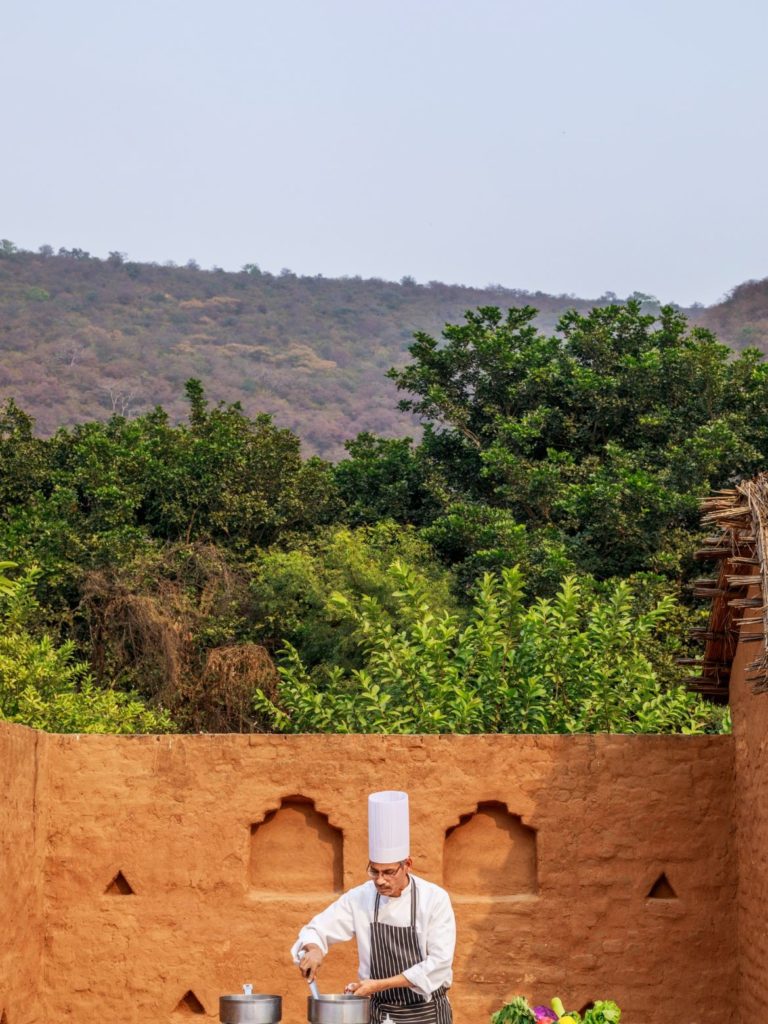





This concept of biophilia – greenery used to soothe is becoming an increasingly popular design tool and frequently employed in wellness design. “I’m seeing a strong pull towards settings that are resplendent in nature – be it wild and vast, or artfully curated,” says Mandy Saven, content director at trend agency, Stylus.
“Greener spaces are providing a catharsis for anxiety addled consumers. I’m also noting an uptick in wellness-evoking spaces that seamlessly blend into their surroundings, creating an unobtrusive and natural presence.”
With ongoing developments in technology, we will witness wellness environments become better informed by information gleaned from a variety of data-driven sources. “With the internet of things, we will have data on the impact of our physical environments – air quality, acoustics, lighting levels,” adds Foolscap Studio’s Adèle Winteridge. “The implication of this information-rich context allows us to be more scientific and precise in creating responsive environments.”
The fusion of all these factors will lead sensitive design professionals to approach any type of space with the necessary tools, materials, resources and experiences to elevate them from mere function to environments that foster community, connection and general wellbeing.
This article first appeared in Indesign magazine, issue #87. Purchase the issue, or subscribe.


